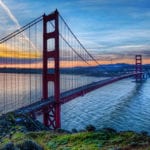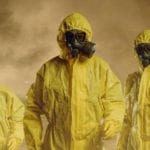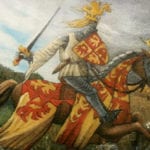 Our World
Our World  Our World
Our World  Movies and TV
Movies and TV The 10 Coolest Stars to Set Sail on The Love Boat
 History
History 10 Things You Didn’t Know About the American National Anthem
 Technology
Technology Top 10 Everyday Tech Buzzwords That Hide a Darker Past
 Humans
Humans 10 Everyday Human Behaviors That Are Actually Survival Instincts
 Animals
Animals 10 Animals That Humiliated and Harmed Historical Leaders
 History
History 10 Most Influential Protests in Modern History
 Creepy
Creepy 10 More Representations of Death from Myth, Legend, and Folktale
 Technology
Technology 10 Scientific Breakthroughs of 2025 That’ll Change Everything
 Our World
Our World 10 Ways Icelandic Culture Makes Other Countries Look Boring
 Our World
Our World 10 Ways Your Christmas Tree Is More Lit Than You Think
 Movies and TV
Movies and TV The 10 Coolest Stars to Set Sail on The Love Boat
 History
History 10 Things You Didn’t Know About the American National Anthem
Who's Behind Listverse?

Jamie Frater
Head Editor
Jamie founded Listverse due to an insatiable desire to share fascinating, obscure, and bizarre facts. He has been a guest speaker on numerous national radio and television stations and is a five time published author.
More About Us Technology
Technology Top 10 Everyday Tech Buzzwords That Hide a Darker Past
 Humans
Humans 10 Everyday Human Behaviors That Are Actually Survival Instincts
 Animals
Animals 10 Animals That Humiliated and Harmed Historical Leaders
 History
History 10 Most Influential Protests in Modern History
 Creepy
Creepy 10 More Representations of Death from Myth, Legend, and Folktale
 Technology
Technology 10 Scientific Breakthroughs of 2025 That’ll Change Everything
 Our World
Our World 10 Ways Icelandic Culture Makes Other Countries Look Boring
10 Well-Known Disasters And Their Deadlier Historical Counterparts
The human mind seems to be programmed to think that things did not happen unless one can personally recall it happening. Historians must fight an uphill battle with the general population to convince them that the terrors and tragedies that haunt modern life are often but repetitions of historical events that have already destroyed lineages, families, and communities. These are calamities that, if they happened today, would have graced the pages of tabloids, clogged up Facebook feeds, and inspired a million differently colored ribbons and GoFundMe campaigns.
We think that we’re the generation who has had it the hardest, the most dangerous, the most terrifying—not so. Here are ten modern disasters you probably remember and their older, often deadlier, counterparts.
10 The 2004 Indian Ocean Tsunami And The 365 Alexandria Tsunami
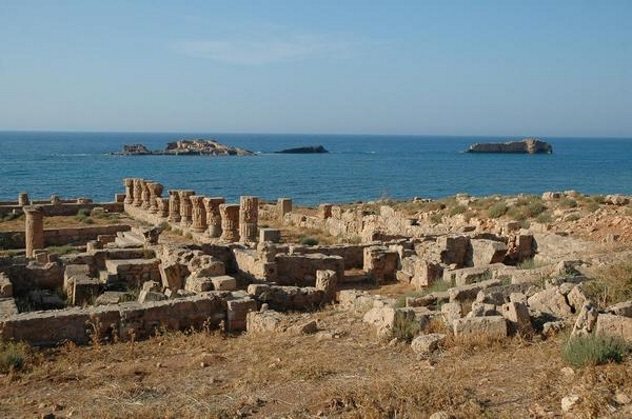
Most of us remember the tragic 2004 Indian Ocean earthquake and tsunami, the giant waves that hit highly populated areas that fronted onto the Indian Ocean, killing up to 280,000 people in their path. It killed the old and the young and the curious, too, who didn’t know that when the ocean recedes rapidly and exposes the sea floor, it is a good idea to run.
The massive earthquake event of AD 365, centered as it was on the Mediterranean island of Crete, must have truly seemed like the wrath of the gods. The island was immediately reshaped by the two tremors, the second of which has been estimated to have been a magnitude of about 8.0 or above. Every town on Crete was destroyed, and countless were killed.
This earthquake sent a huge wave hurtling toward Alexandria in Egypt, killing 50,000 people in the city and surrounding areas, along with communities in West Cyprus, Libya, and Sicily. The fertile farmland was flooded with salt water, and the buildings of Alexandria’s Royal Quarter began to slowly be overtaken by the sea. The ruins of the former heart of the city are now fully and permanently underwater.[1]
The earthquakes and resulting tsunami permanently reshaped coastlines and islands in the Mediterranean and caused not only death but a grim economic burden on the civilizations of the time. The devastation was simply enormous, as Greco-Roman author Libanius wrote:
Earth [ . . . ] Like a horse shaking off his rider, she has already destroyed many cities—many in Palestine, all of them in Libya. The greatest cities in Sicily lie in ruins, as do those of the Hellenes, except one [Athens]; beautiful Nicea has been felled and our own, the all beauteous one [Antioch] has been shaken and cannot trust in the future.
9 The 1967 Silver Bridge Disaster And The 1807 Eitaibashi Tragedy
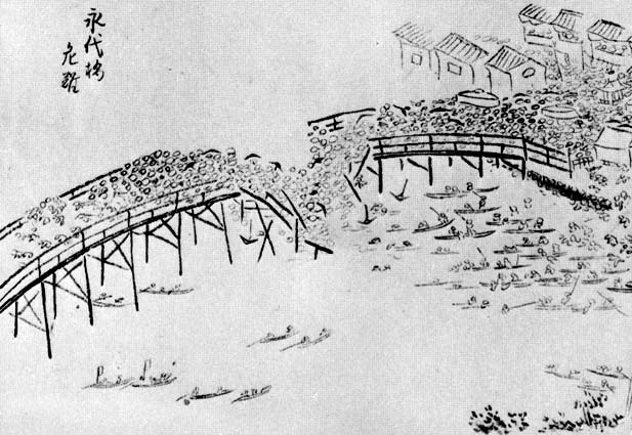
While you may not immediately know the name of the Silver Bridge, it was a suspension bridge that passed between West Virginia and Ohio at the West Virginian town of Point Pleasant. Point Pleasant was made famous by the legend of Mothman, a giant winged creature which many believed came to warn the township of the impending collapse of the Silver Bridge.
In December 1967, as commuters working in Ohio were driving home to Point Pleasant and West Virginians were going to Ohio for some Christmas shopping, a link of the suspension chain broke, and the bridge collapsed. The collapse was sudden, pitching vehicles into the water and killing 46 people. It was a terrible tragedy that shook the small community and also entered the public psyche due to its connection with the Mothman legend.
In 1807, the Eitaibashi Bridge, which spans the Sumida River in Tokyo, was already over a century old. It was a wooden bridge that connected an area of temples with the city of Tokyo. There was confusion and dispute over who was responsible for the maintenance and upkeep of the bridge, and as a result, it was not properly cared for. Each side was looked after by a different community.
In 1807, excited residents of the Fukugawa side rushed to a festival that was being held on the Edo side. The weight of the throng caused the old bridge to collapse, depositing 1,400 people into the river, where they drowned.
To compound the tragedy, more and more eager festivalgoers pushed from the back of the crowd, unable to see what had happened. A stream of people fell in the river until an official with a sword physically prevented the crowd from pushing more unfortunate souls to their deaths.[2]
8 The 1906 San Francisco Earthquake And The 1556 Shaanxi Earthquake
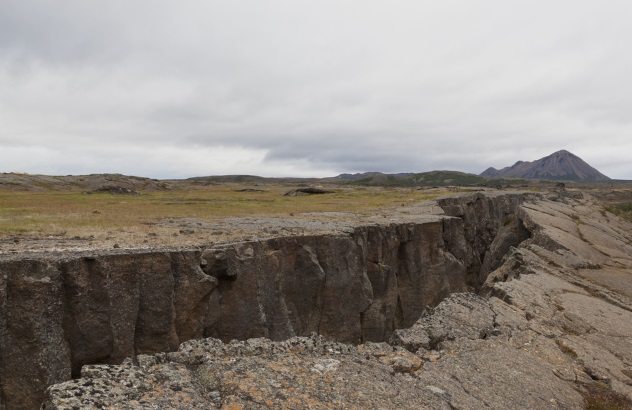
When Westerners think “big, scary, city-destroying earthquake,” the 1906 San Francisco Earthquake possibly springs to mind. There are still people alive who remember their relatives talking about it, and there are a lot of accessible photos on the Internet that show the incredible damage to buildings in the San Francisco area. At least 700 people died, fires raged, and the magnitude of the earthquake has been estimated more recently at 7.9 on the newer moment magnitude scale.
Make no mistake, the earthquake was devastating, tragic, and history-changing. But in the business of sheer destruction, it was eclipsed by the 1556 Shaanxi earthquake.
Early in the morning in the provinces of Shanxi and Shaanxi, China, an estimated magnitude-8 earthquake struck. The outcome was catastrophic, and more than 800,000 deaths were attributed to the tremor and resulting floods and fires. Sixty percent of the populations of these provinces are believed to have been killed. Whole families, towns, and communities were wiped out, along with mountains and river courses. Huge crevices opened in the ground, and landslides decimated villages.[3] As a result of the devastation, many of the survivors rebuilt with wood and bamboo instead of stone, making their villages and communities safer for future earthquakes.
The Shaanxi earthquake is the deadliest ever recorded, and yet it sparks much less interest than the San Francisco quake, despite the fact that many hundreds of thousands more people died. This may not have been the case had there been photography in the 1500s. Hopefully, lifesaving lessons have been learned from this disaster, and an earthquake will never cause destruction on this scale again.
7 The 1917 Halifax Explosion And The 1626 Wanggongchang Explosion
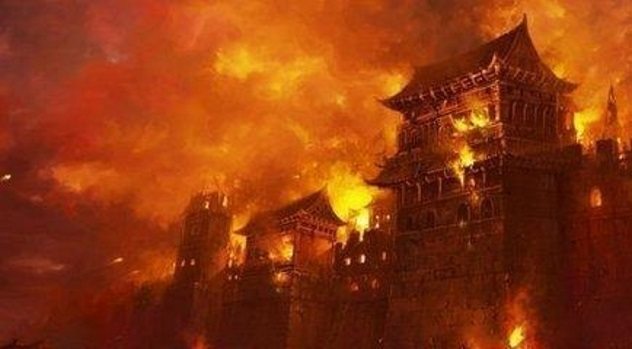
If you ever go to the beautiful city of Halifax in Nova Scotia, do yourself a favor and go on a harbor cruise. There, you will get an informative tour of the harbor, which explores what happened in the 1917 explosion that flattened much of Halifax in the actual spot where the tragic events began.
On December 6, 1917, two ships partook in a tragic “trying to get around you” dance in the harbor that resulted in a collision. One of the ships, the Mont-Blanc, was carrying munitions for use on the World War I battlefront. When the ships collided, the Mont-Blanc initially burned, and thousands watched as the thick smoke filled the air. It was an interesting distraction from an ordinary day.
Then the ship blew up, killing 2,000 people and injuring and blinding 9,000, including those who had stopped their daily activity to watch. The explosion was so big it caused a tsunami that added to the wide-scale destruction. Houses even lost windows in the town of Truro, 100 kilometers (60 mi) away.
In 1626, the Wanggongchang Armory in Beijing was packed full of weapons, including gunpowder. It was secured behind thick walls and seemed virtually indestructible. Then, oddly, a plume of smoke was noticeable above the armory.
Then came a bang that was felt 150 kilometers (90 mi) away and vaporized everything in a 2-kilometer (1.2 mi) radius. About half of Beijing was destroyed by what eyewitnesses say was a mushroom cloud of death. Body parts and building materials rained down on survivors in a pink mist.
The cause of the explosion has been theorized to have been everything from a tornado to an earthquake to an intergalactic nuclear warhead. The strange mushroom cloud and the severity of the blast (equated to the nuclear bomb dropped on Hiroshima) have inspired many a conspiracy theorist.[4] Bodies were found stripped of clothing, three survivors were claimed to have flown up to 100 kilometers (60 mi) through the air unharmed, and one amazingly lucky person survived the blast at the actual factory.
6 The 1981 Hyatt Regency Walkway Collapse And The AD 27 Amphitheater Collapse
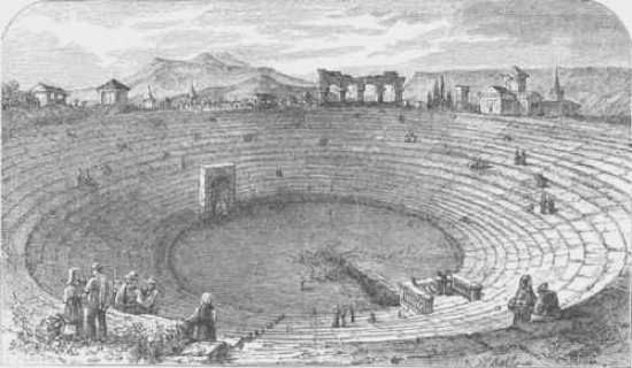
While not everyone may know about the Hyatt Regency walkway collapse, anyone who’s studied engineering or sat in on engineering lectures because they’re a nerd would absolutely know about it. There have been numerous television shows and much media coverage of the tragedy, which has led to the collapse being remembered well and remaining in the popular psyche.
The atrium of the Hyatt Regency in Kansas City, Missouri, had three tiers of suspended walkway around the inside on the second, third, and fourth floors. On July 17, 1981, a tea dance was in full swing, and people were dancing on the floor of the atrium as well as on the suspended walkways. Without warning, the fourth-floor walkway crashed onto the second-floor walkway, which crashed to the ground, killing 114 people. It is the deadliest structural disaster in the United States to date.
But the AD 27 collapse of a wooden amphitheater in Fidenae, Italy, was far beyond anything that any modern average Joe could comprehend. The amphitheater was, by all reports, cheaply built in a rush. When the wooden structure collapsed, 20,000 people died, and more were maimed and injured.
Modern medicine and infrastructure would struggle to cope with such a disaster. One wonders how Rome, only 8 kilometers (5 mi) away, coped with a tragedy of this scale.[5]
5 The 2016 Ghost Ship Fire And The 1942 Cocoanut Grove Fire
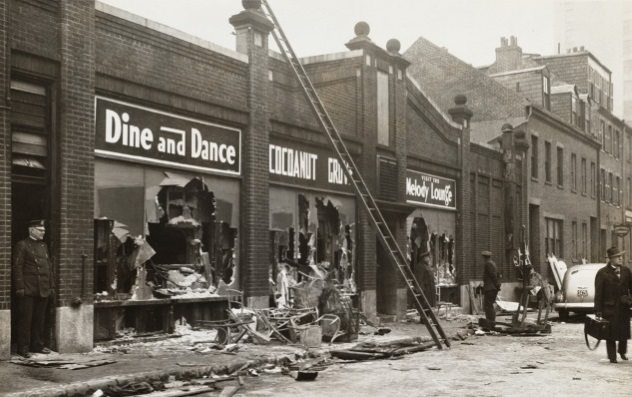
In 2016, the world was rocked by the news of the tragic fire in the Ghost Ship collective. There is a special poignancy awarded to tragedies that happen in places that are meant to be fun and give relief from the stressors of everyday living.
The Ghost Ship was a bohemian artists’ residence and performance space that had been created inside an old warehouse in Oakland, California. Filled with flammables such as art supplies and electrical cords, the lower floor had rented mobile accommodations, and the upper floor had a space that was used for concerts and dance parties. It was at such a dance party on December 2, 2016, that a fire broke out in the poorly ventilated and fire safety–noncompliant building. Thirty-six people were killed and two injured in the dark, confusing, and illegal structure as the floors collapsed in on each other.
As tragic as the Ghost Ship Collective fire was, the sheer enormity of the death toll of the 1942 Cocoanut Grove nightclub fire is horrifying.
In the midst of the war-torn early 1940s, on November 28, 1942, to be exact, anyone who was anyone at all in Boston was at the Cocoanut Grove. Featuring two stories—a first floor of dining and dancing and a bar in the basement called the Melody Lounge—the Cocoanut Grove was the popular choice for the discerning night owl.
After a worker accidentally set an artificial palm tree on fire in the Melody Lounge, a huge fireball and cloud of toxic gas traveled quickly through the basement area and up the stairs. Panicked guests swamped the revolving exit doors and were crushed against the glass by the weight of those pushing from behind.
Of the estimated 1,000 people in the building that night, 492 people died, and hundreds more were injured. Though the fire department arrived quickly and put out the blaze with appropriate speed, the stacks of dead and injured near the doors made it hard to get in to the wounded and to let air in for those still trapped inside. Interestingly, the survivors of this disaster were the first to receive penicillin as a non-test drug to help fight infections from the burns.[6]
4 The 1989 Hillsborough Stadium Crush And The 1809 Ponte Das Barcas Disaster
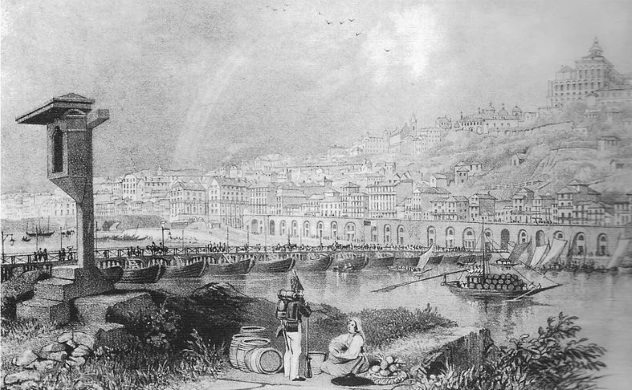
When people say that they have a fear of crowds, they’re often told that their fears are unreasonable and the result of anxiety. A reader of history will note that there are many thousands of reasons why people should be wary of crowds—all of them dead.
On April 15, 1989, the FA Cup semifinal between Liverpool and Nottingham Forest was sold out. Fans were separated due to fears of violence, and the club with the larger number of fans, Liverpool, was for some reason put in the smaller end of the stadium. Not a good idea.
The areas closest to the game were divided into “pens,” into which fans could go in and out through narrow entrances. However, the very narrow entrances and too many fans meant that there were people pressed up against the barriers and climbing fences to escape from the push of spectators trying to get in to see the start of the game. In all, 96 fans died, crushed to death under the weight of each other.
The 1809 Ponte das Barcas incident was a different type of calamity in that it wasn’t a peacetime disaster, but the magnitude of deaths by drowning was far greater and also included thousands of children. The tragedy was also brought on by the weight of a rush of people.
When Napoleon invaded Portugal with his huge army, the citizens of the peaceful Portuguese city of Porto fled onto the Ponte das Barcas Bridge over the river Douro and sank the pontoon structure under their combined weight. An estimated 6,000 people drowned. Whole generations of a city were left bereft.[7]
3 The 2012 Sinking Of The Costa Concordia And The 1120 Sinking Of The White Ship
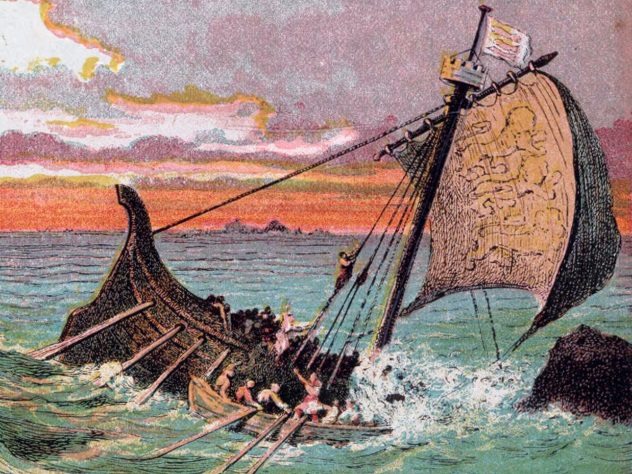
The Costa Concordia has become synonymous with terrible captaincy and the horrors of cruise ships in general.
On January 13, 2012, Captain Francesco Schettino began his dive down into the history books as the notorious perpetrator of an unnecessary maritime disaster that killed 32 people onboard. Going way off course, Captain Schettino had ordered the ship too close to Giglio Island, where she hit a rock.
What happened afterward was a completely shambolic misadventure, with the ship drifting around in the water for hours, the captain and crew leaving the vessel with passengers still on it, and said passengers being repeatedly told that things were fine when they absolutely were not fine.
While everyone knows about the Costa Concordia, the modern reader is probably not as familiar with the 1120 sinking of the White Ship in the English Channel.
While 300 people did tragically lose their lives, the reason that the wreck of the White Ship went down in history as such a momentous disaster is that the heir of King Henry I of England drowned on the fateful night of November 25, 1120. Prince William was set to not only inherit what is now modern England but also Normandy. He boarded what was very much a party boat with a half-brother and half-sister, Richard and Matilda. Everyone, crew included, was very possibly completely drunk, and the ship hit a rock and capsized.
Despite the calm sea, few could swim at that time, and the sole survivor was a butcher with the rather awesome name of Berald.
The king was overcome with grief at the loss of his legitimate heir, William, and two much-loved bastards. The sinking of the White Ship has now become somewhat of a medieval murder mystery to suspicious-minded historians.[8]
2 The 1980 Eruption Of Mount St. Helens And The 1815 Eruption Of Mount Tambora
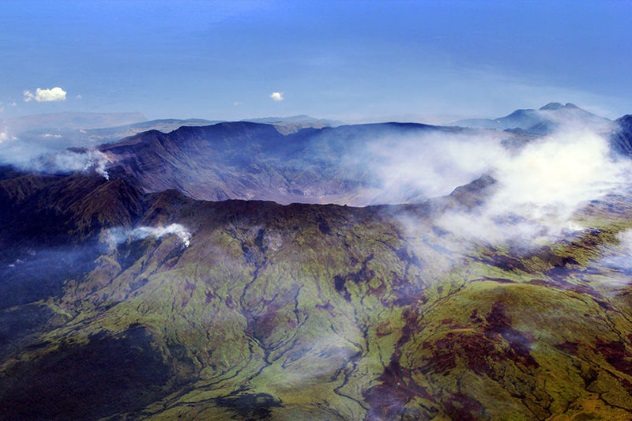
The 1980 eruption of Mount St. Helens wasn’t long ago, and millions of people can remember the event clearly. You can even watch it on YouTube. On May 18, 1980, a geologist, David Johnston, was stationed to monitor the growing bulge on the north flank of the volcano, which had officials worried. An earthquake triggered an enormous landslide, which triggered the eruption, shooting ash, water, and rock debris 18,000 meters (60,000 ft) into the air.
Fifty-seven people died from the blast, and the shape and landscape of the region changed forever. David Johnston radioed in some data and was then obliterated, wiped out by the enormous blast of the volcano. Everything within 600 square kilometers (230 mi2) around the volcano was destroyed by the blast, and a larger area experienced damage and inconvenience from ash, smoke, and mudflows from the volcano.
However, the 1815 eruption of Mount Tambora in Indonesia was beyond devastating.
Gunung Tambora exploded on April 10 after several warning tremors on April 5. The blast, pyroclastic flow, and resulting tsunamis caused a mega-catastrophic event that killed 10,000 people and destroyed over 35,000 homes. The resulting starvation and disease killed a further 80,000 Indonesians. The ash cloud from the volcano blocked the Sun and caused global temperatures to drop an average of 3 degrees Celsius (5.4 °F), and 1816 became known as the Year Without a Summer.[9]
1 The 2013–2016 West African Ebola Epidemic And The 1330s–1350s Black Plague
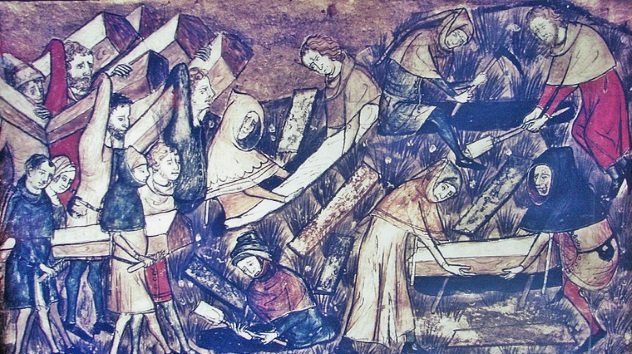
There was a time not long ago in which the word “Ebola” was on everybody’s lips. Ebola seemed uncontainable and incurable. It reached the US, and anyone traveling from Africa was met with suspicion and fear. It was meant to be the end of the world. Clearly it wasn’t. You can tell because you’re reading this list.
In Guinea, Liberia, and Sierra Leone, however, more than 28,000 people caught Ebola, and 11,000 died from the disease, which left whole communities devastated and authorities afraid to bury the dead.
Considering the fear and horror that this outbreak caused among those in countries that were not affected, one can only imagine the level of devastation wrought by the European Black Plague, which affected more than just Europe. The scope of such a disaster was immense.
The Black Plague killed at least 75 million people, and it killed them horribly. The afflicted were covered with pustules, boils, black gunk, suffering from intense pain, chills, and vomiting, and suddenly, they were dead. People would wake up fine and then die in the course of a day.
The disease was spread by rodents and fleas and was airborne as well. The disease also killed poultry, cattle, goats, and sheep. There was nowhere to run. There was nowhere to hide. You died or you didn’t.[10]
Mostly, you did.
Christy Heather is an author and professional writer from Gippsland in Victoria, Australia. You can read her sentimental writing here and buy her first novel here. Christy is a practicing criminal lawyer and lifelong nerd.
Read about more natural disasters from the past on 10 Devastating Natural Disasters Forgotten By Time and Top 10 Most Terrifying Natural Disasters in History.



